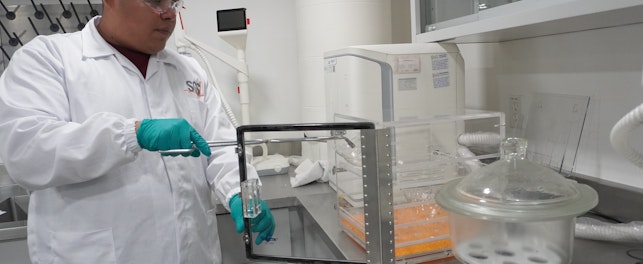What we wear says a lot about who we are. The negative aspects of some clothing and textile manufacturing processes are well documented and so, with consumers now actively seeking options that reflect their values, the market for products that are safer, healthier and more sustainable is growing.
Textile dyeing is now an area of increasing concern. Traditional methods have been wasteful, requiring harmful chemicals and the use of large amounts of water and energy. These harmful chemicals are often lost into the process effluent and dumped into the environment.
Brands and consumers want commercial alternatives that provide improved sustainability, without a loss in quality. Forward-thinking manufacturers are turning to alternative dyeing techniques, such as dope dyeing and vegetable dyeing, to meet these requirements.
Dope dye
Alternatively known as spun dyeing or coloration, mass coloration or dyeing, or solution dyeing, this technique involves the coloring matter being incorporated into a polymer solution, or polymer melt, before the fiber filament formation. It is an increasingly popular technique for coloring textiles, compared to piece dyeing.
Since the color is incorporated directly into the fiber, it provides exemplary colorfastness and superior coloring matter dispersal. This method also negates dye loss into effluents and ends the need for after-treatments and additional rinsing. However, it is only applicable to manufactured fibers, therefore slow to change and making it difficult to adapt quickly to changes in fashion.
Vegetable dye
Many brands are also turning to natural dyes to improve sustainability. These dyes are biodegradable, renewable, and have a reduced negative impact on human health and the environment.
As the name suggests, vegetable dyes originate from plants – their seeds, flowers, roots, leaves, fruits, etc. While they are better for the planet, they do also have limitations for the manufacturer – poorer colorfastness and reproducibility of shades and a low affinity for synthetic fibers.
Challenge
These two dyeing techniques offer the textile industry multiple advantages in terms of reducing their environmental footprint while meeting the changing demands of consumers. However, without independent laboratory analysis, it can be difficult to differentiate between textiles that are dyed using traditional methods and those that have been dope or vegetable dyed.
This creates a challenge for garment makers and brands: how do they build trust in their products and demonstrate to consumers and buyers that they have used these alternative methodologies when dyeing fibers?
The solution is independent screening by a third-party service provider and the application of a recognized product mark that both consumers and retailers can understand and trust.
SGS solution
SGS has developed two dedicated screening services to help manufacturers and brands confirm the dyeing method used in their products:
- SGS dope dyeing verification service
- SGS vegetable dyed material verification service
Using an analytical laboratory testing approach that covers colorant type and/or index ingredients, we are able to differentiate between vegetable dyes, normal dyes, pigment dyes and dope dyes.
Once the dyeing method has been corroborated, the product can carry the SGS Independently Checked (IC) Mark. This is a clear indication to the buyer that a fabric or product has been independently verified as conforming to agreed test parameters, including dyeing criteria.
To display the mark, a product must undergo:
- Laboratory analysis to verify dyeing method
- Compliance testing against mandatory regulations
- Document review and on-site/remote assessment of manufacturing processes
- Restricted substances testing
The mark also contains a QR code that gives stakeholders access to details of the used test criteria, thereby improving transparency and consumer trust. After all, in the end, it’s only trusted because it’s tested.
Enjoyed this article?
Find more news and updates in our Consumer Compact newsletter >
Delivered direct to your inbox
Subscribe to Consumer Compact >
Follow us on LinkedIn >
For further information please contact:
Keith Tsang
Senior Service Development Manager
SGS Connectivity & Products
t: +852 2204 8354



